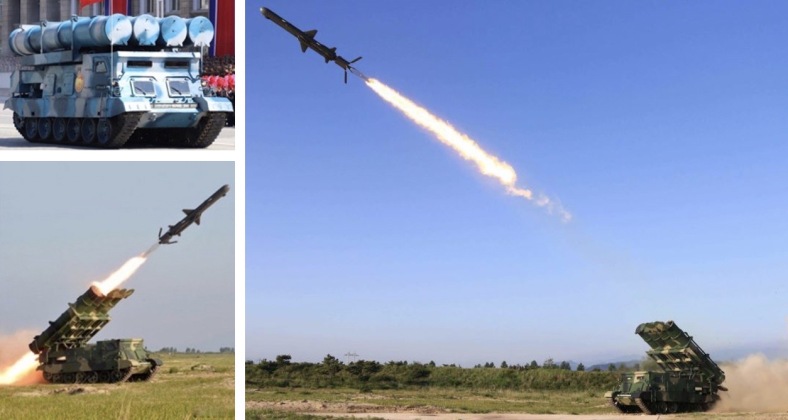News
North Korea’s Arsenal Continues to Modernise: New Artwork Contrasts Advanced Missile Force with Ageing Fighter Fleet
As North Korea celebrates the 74th anniversary of its national foundation, with an unprecedentedly large outdoor concert in Pyongyang and growing signs of relaxation of COVID-19 measures, the state has released a range of new artworks from performing arts to posters promoting its achievements. A new military poster showing a servicemen directing nine ballistic missiles, a frigate launching a cruise missile, and two fighter aircraft, has served to highlight some of the important trends in the country’s armed forces. Titled Let Us Put the Construction of National Defence First and Foremost, its emphasis on missiles is far from unprecedented and reflects the armed forces’ strong focus on such assets to counter the conventionally larger forces of the United States with which it remains at war. What is notable about the missiles displayed, however is the inclusion twice of the newly tested Hwasong-17 intercontinental range platform which is speculated to be capable of deploying multiple warheads. The missile has a central place behind the soldier, and is in the front on its transporter erector launcher in the arsenal displayed in front of him. It was first launched in March 2022 following its unveiling in October 2020.

Also displayed behind the soldier I prominent places are the Hwasong-15, North Korea’s first ICBM capable of hitting America’s East Coast which first demonstrated its capabilities in November 2017, and the Hwasong-8 hypersonic glide vehicle equipped missile first test fired in September 2021, which made North Korea the third country in the world with such weapons after China and Russia. Alongside other missiles, the depiction of a corvette firing a Kumsong-3 anti ship cruise missile serves as an important indicator of the country’s growing focus on this new kind of more tactical munition – albeit primarily for use from mobile launchers rather than warships. The Kumsong-3 entered service in 2017 and that year demonstrated the ability to carry out complex waypoint manoeuvres surprising many analysts with its advanced capabilities.

Less common in North Korean military art was the display of fighter aircraft, namely two MiG-29s, which fly up behind the missiles. North Korean fighter aircraft have increasingly made appearances at major events including MiG-29s with special lighting which overflew Kim Il Sung square in the capital during special night-time celebrations on national day. The discrepancy between the Air Force’s fighter fleet and the inventories of other service branches, whether ballistic missiles, tanks, artillery, submarines or even drones, has continued to grow as North Korea’s defence sector remains able to produce for almost all the military’s needs. An inability to produce fighters, however, has remained an outstanding weakness particularly as UN arms embargoes have prevented procurement of new fighter aircraft from abroad.
North Korea’s top fighter the MIG-29 was first procured in the 1980s, and was produced domestically under license from the mid-1990s and possibly long afterwards – albeit heavily dependant on Russian inputs. This has left the size of the MiG-29 fleet, and the duration of Russian support for production, highly uncertain. Whether the fighters have been modernised with newer missiles, avionics, sensors and engines also remains unknown. Obstacles to modernising the fighter fleet, however, may well be resolved in the near future. As North Korea has been highlighted as a potentially key supplier of arms to the Russian Military for its ongoing war effort in Ukraine, while Moscow has in the past reportedly offered its fighter aircraft abroad in exchange for arms imports, sales of new aircraft, even if newer MiG-29s, may be possible.












